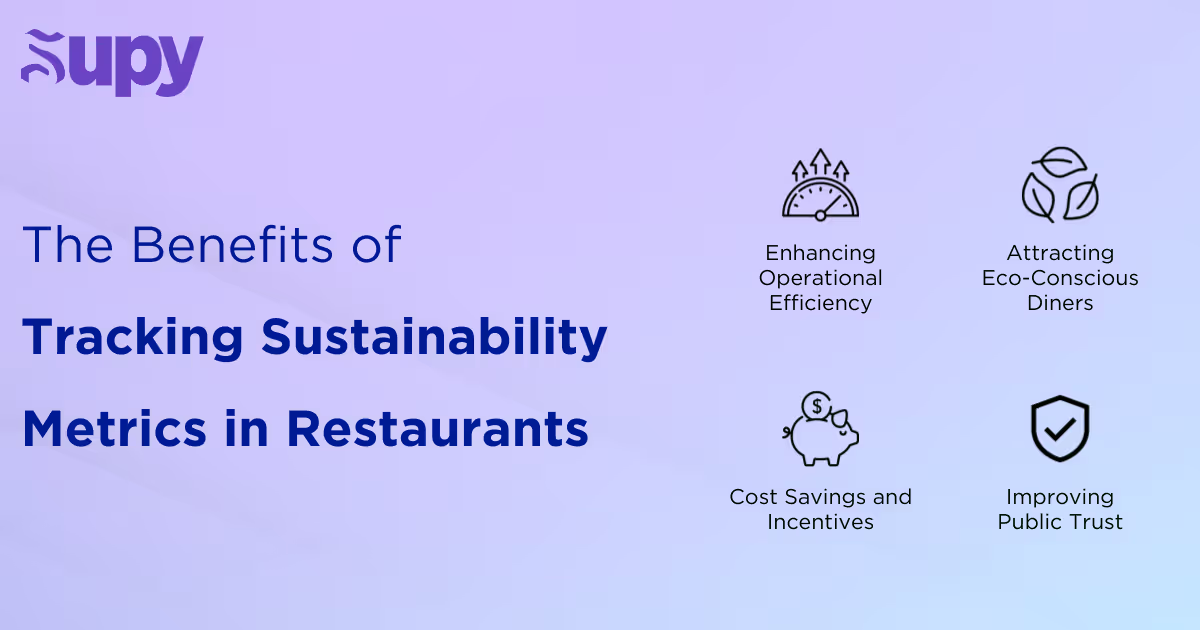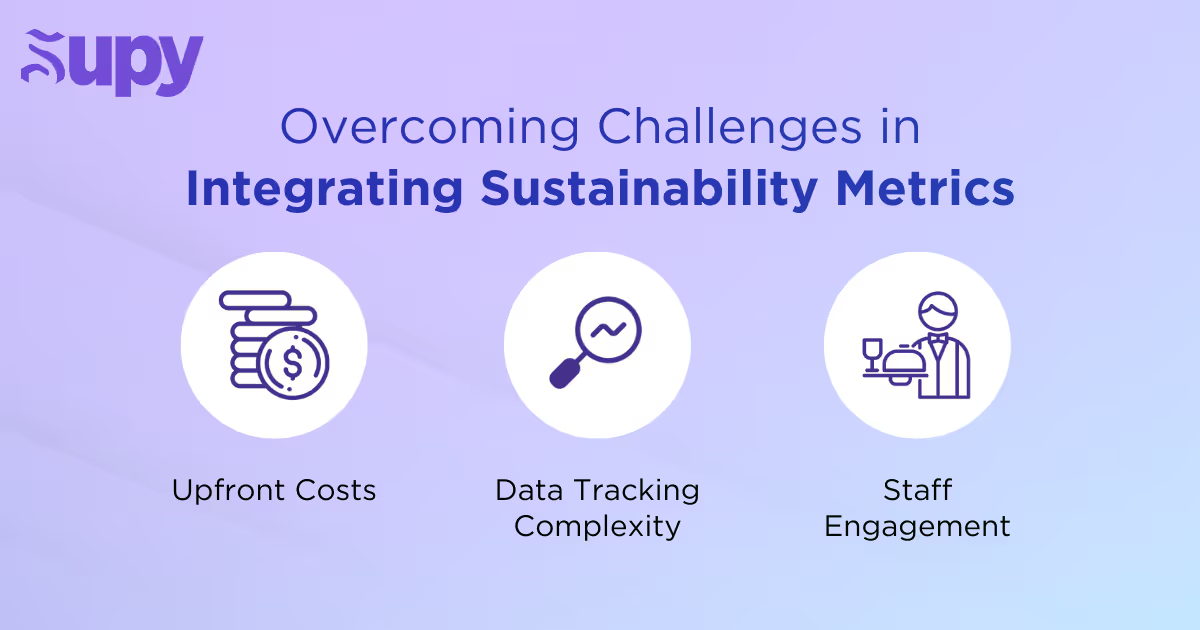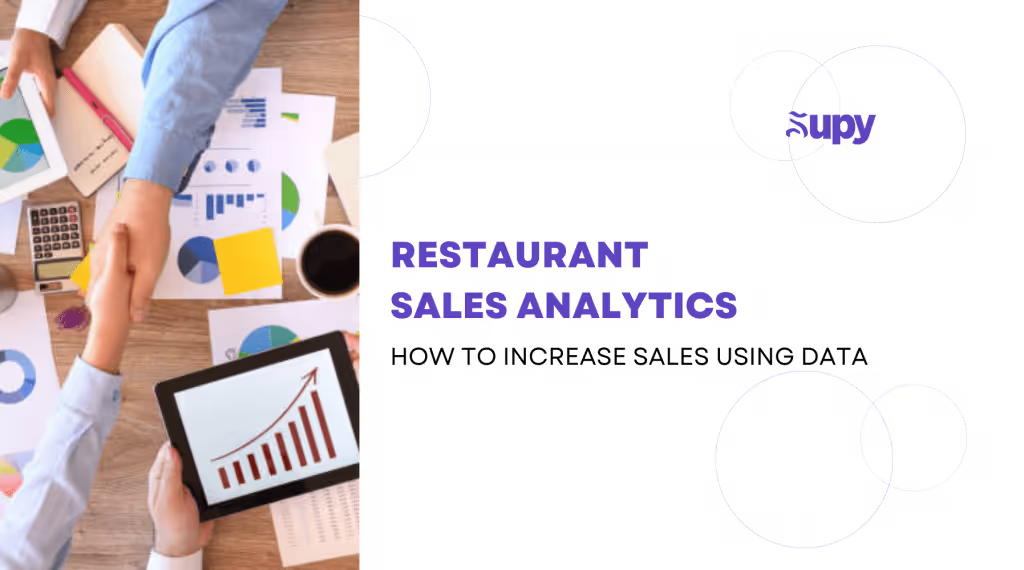Integrating Sustainability Metrics into Restaurant Operations

As environmental concerns around the world continue to rise, it’s become more important than ever for restaurants to focus on developing sustainable practices and systems of operation. A sustainable restaurant is one that actively seeks out eco-friendly initiatives as part of its business strategy, from locally sourcing their ingredients to minimizing waste. One of the most effective ways for restaurants to achieve this level of eco-friendliness is through the integration of sustainability metrics that allow them to track and measure their environmental impact while keeping operational efficiency levels high.
Table of Contents
- The Role of Sustainability Metrics in Restaurant Operations.
- Key Sustainability Metrics for Restaurants.
- Implementing Sustainability Metrics through Technology.
- Benefits of Tracking and Reporting Sustainability Metrics.
- Challenges in Integrating Sustainability Metrics.
- Supy’s Role in Integrating Sustainable Restaurants.
- Conclusion.
- About Supy.
Take the example of one mid-sized restaurant. By tracking its energy usage and waste production, the restaurant’s management team identified several inefficiencies in its food storage and water consumption practices. The company immediately set out to install energy-saving kitchen equipment and optimized its inventory systems to reduce food waste. The result was a significant reduction in the restaurant's environmental footprint, as well as a decrease in operational costs!
The term sustainability metrics can be used to refer to anything from your means of energy consumption and water usage to food waste and carbon emissions. By analyzing these metrics, restaurants can identify areas for improvement and set measurable goals for reducing their environmental footprint. Interested? Read on to learn more!
1. The Role of Sustainability Metrics in Restaurant Operations
Sustainability metrics are quantifiable measures that can be used to assess the environmental impact of a business’s operations. In restaurants, these metrics provide crucial insights into how waste, energy, water, and sourcing practices affect both the environment and sustainable dining overall. By analyzing this data, restaurants can track their performance in key sustainability areas and make informed decisions to minimize their ecological footprint.
There are lots of incredible benefits to integrating sustainability metrics into your restaurant operations. For example, tracking your energy usage and waste production can reveal inefficiencies that, once fixed, lead to cost savings. Restaurants that actively work towards becoming more sustainable also often enjoy an enhanced brand reputation, attracting environmentally conscious consumers who prioritize businesses committed to green practices.
Some common areas where sustainability metrics can be applied include:
- Waste Management: Monitoring waste metrics can help reduce food waste and improve recycling efforts.
- Energy Conservation: Energy metrics track electricity and fuel usage, helping to optimize energy consumption.
- Water Usage: Water conservation can be monitored by tracking water usage in kitchen and facility operations.
- Sustainable Sourcing: Metrics related to sustainable sourcing ensure that food ingredients are sourced responsibly, reducing the environmental impact of supply chains.
Incorporating these metrics not only aids in operating sustainable restaurants but also supports long-term operational efficiency on your sustainability journey!
2. Key Sustainability Metrics for Restaurants

In this section, we’ll explore four key sustainability metrics that most sustainable restaurants adopt to lead the charge toward a more sustainable future for the restaurant industry.
Waste Reduction Metrics
Waste management is one of the most critical areas where restaurants can reduce their environmental impact. By tracking food and packaging waste and implementing strategies to minimize both, you can significantly cut down your business’ landfill contributions. One effective method of reducing waste is to adopt composting programs that turn food scraps into nutrient-rich compost, while another is to adopt recycling programs to handle any non-biodegradable materials.
Energy Conservation Metrics
A restaurant’s energy usage often contributes heavily to its carbon footprint. By monitoring your energy consumption through the use of energy-efficient appliances and installing new sources of renewable energy, you can dramatically lower your restaurant’s environmental impact. Energy-efficient appliances, smart thermostats, and even renewable energy systems like solar panels can all help you make a difference.
Water Usage Metrics
Water conservation is another important area where restaurants can optimize sustainability. By measuring water usage, upgrading to water-saving equipment, and implementing conservation strategies, restaurants can dramatically reduce their water footprint. Monitor how much water is used in your kitchen (especially while dishwashing) and try to upgrade to more water-efficient technologies for higher savings.
Sustainable Sourcing Metrics
Lastly, tracking and increasing your use of local, organic, and ethically sourced ingredients is another way to integrate sustainability without losing out on corporate success. By sourcing your fruits and vegetables from local farms and suppliers, you not only reduce transportation-related emissions but also support your local economy!
By integrating these key sustainability metrics into daily operations, restaurants can make significant strides in improving their environmental responsibility.
3. Implementing Sustainability Metrics through Technology
Today you’ll find all sorts of gadgets on the market designed to help restaurants track their key performance indicators (KPIs), such as waste reduction, energy consumption, and water usage. Tools such as restaurant management software, Internet of Things (IoT) sensors, and energy monitoring systems all provide real-time data that can help restaurants make informed decisions to improve their sustainability efforts.
For instance, restaurant management software (like Supy’s!) can consolidate sustainability metrics from multiple locations onto a single dashboard, allowing operators to identify inefficiencies and take corrective action. Meanwhile, IoT sensors can be deployed in kitchens and dining areas to monitor energy use, track waste production, and even optimize water flow. These technologies help automate data collection, reducing human error and providing more accurate insights into a restaurant’s environmental footprint.
Sample Case Study
Take the example of one multi-location restaurant chain that wanted to improve sustainability across its operations. The company implemented restaurant management software to monitor energy use and waste production at each location. With real-time data on electricity consumption, food waste, and water usage, the chain was able to adjust processes to reduce its overall environmental footprint.
By integrating these technologies, the restaurant chain successfully reduced energy consumption by 20% and decreased waste output significantly, demonstrating the value of tracking sustainability metrics through technology.
4. Benefits of Tracking and Reporting Sustainability Metrics

There are lots of ways tracking and reporting your sustainability metrics can improve your local operations:
Enhancing Operational Efficiency
By tracking their sustainability metrics, restaurants can identify sources of inefficiency in their energy usage, water consumption, waste management, and food sourcing. Analyzing this data helps restaurant owners and operators to make informed decisions about how to reduce their energy wastage, optimize water usage, and implement more effective recycling programs.
Attracting Eco-Conscious Diners and Customer Loyalty
In today’s eco-conscious market, diners are increasingly choosing to eat at restaurants that market themselves as sustainable. By tracking and reporting your sustainability efforts, you can show your customers how your restaurant is dedicated to reducing its environmental footprint. This kind of transparency is designed to foster trust, which can lead to improved customer loyalty and a reputation as an ethical brand.
Cost Savings and Incentives
Beyond customer engagement, sustainability metrics can lead to substantial cost savings. Reducing energy consumption, managing food waste more effectively, and optimizing supply chains all contribute to lower operational costs. Additionally, tracking sustainability efforts can make restaurants eligible for government incentives or certifications that can further enhance your savings in the long term.
Improving Public Trust and Brand Positioning
Finally, transparently reporting your sustainability metrics is a powerful way to differentiate your restaurant from competitors in an otherwise seriously crowded market. When diners see a restaurant being open about its sustainability goals and achievements, it improves public trust and strengthens the brand's position as a leader in responsible business practices. This helps attract not only diners but also potential business partners, investors, and employees who value sustainability!

5. Challenges in Integrating Sustainability Metrics

While integrating sustainability metrics into restaurant operations can offer long-term benefits, there are several challenges that restaurants must address to ensure success.
Upfront Cost
One of the most significant hurdles is the upfront cost associated with implementing sustainable practices. Restaurants may need to invest in new equipment, technologies, or sustainable materials, which can be expensive.
Data Tracking Complexity
Additionally, data tracking is a complex process that can pose a challenge, as restaurants need to monitor a range of metrics, including energy consumption, waste output, water usage, and sourcing practices. Without the right tools, gathering and analyzing this data can become overwhelming.
Staff Engagement Hurdles
Another challenge is staff engagement. Sustainability initiatives require active participation from all team members, from chefs and kitchen staff to front-of-house personnel. However, without proper training and buy-in, employees may resist changes, especially if they perceive these initiatives as an added burden on their daily responsibilities.
To overcome these challenges, restaurants can adopt a phased implementation approach, integrating these sustainability metrics slowly and gradually instead of making quick and immediate changes. This allows the business to adapt and spread its costs out over time.
6. Supy’s Role in Integrating Sustainable Restaurants
Supy offers comprehensive support and consulting services designed to help you in your journey towards expansion. Here’s how Supy can assist:
- Unlock Profitable Restaurant Procurement: Track the value of your purchases across your suppliers and restaurant locations. Coordinating with your suppliers through the latest restaurant technology is an excellent way to streamline your supply chain and prevent overstocking. This ensures sustainable practices, like avoiding spoilage and excess inventory that can lead to wastage.
- Identify and Address Sources of High-Waste: It can be difficult to identify where our waste comes from during restaurant operations. Are there too many expiring items? Or are ingredients getting lost during the preparation process? With solid stats at hand, Supy makes it easier to train your team and create profitable items for your menu.
- Making Data-Informed Decisions: Supy’s interactive and mobile-friendly restaurant dashboards are a great tool for owners and managers trying to cover all of their back-of-house operations. With the Restaurant Analytics feature, Supy makes it a breeze to check out your procurement, inventory, and sales stats at a single glance!
- Order To Par & Never Over Or Understock on Items Again: In the Supy app, you can now set a par and minimum level for each item in your inventory. Set personalized alerts that notify you when items go below par and order the exact quantity of all items you need during your next procurement operation—all with a single click!
7. Conclusion
Integrating sustainability metrics into restaurant operations is not only vital for our responsibility to our environment but also for improving our overall operational efficiency. As consumers increasingly prioritize eco-friendly businesses, sustainable restaurants will be well-positioned to meet this growing demand, ensuring long-term success in a competitive market. Adopting these metrics also provides a clearer path to achieving these environmental sustainability goals and aligning with industry trends.
To learn more about how you can integrate these practices into your operations, subscribe to the Supy newsletter, or book a free demo to discover how our solutions can help you create a sustainability strategy! You could even head on over to the Xenia app to learn more ways to save your time, money, and energy.
8. About Supy
Supy is the best restaurant management software platform tailored for multi-branch restaurants and franchises. With unbeatable features like real-time inventory tracking, smart procurement systems, and advanced analytics, Supy helps restaurants manage their various demands effectively. Whether centrally adjusting stock levels or optimizing supply chain relationships, Supy provides the tools restaurants need to thrive in a dynamic industry.
For the latest expert insights, download Supy’s ebook: The Ultimate Guide to Reducing Food Costs in Multi-Branch & Enterprise Restaurants.
Ready to find out more? Schedule a demo with Supy today and take the first step towards a streamlined, profitable future.







